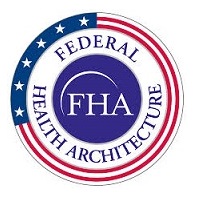 December brings with it holidays, colder weather (usually), and the chance to sit back and review the 2015 calendar year. It was a busy year for our federal partners and FHA as teams focused on numerous projects and deliverables, including the Healthcare Directory, Patient Consent & Authorization, Directed Exchange, and the Enterprise Architecture.
December brings with it holidays, colder weather (usually), and the chance to sit back and review the 2015 calendar year. It was a busy year for our federal partners and FHA as teams focused on numerous projects and deliverables, including the Healthcare Directory, Patient Consent & Authorization, Directed Exchange, and the Enterprise Architecture.
FHA efforts in the Healthcare Directory Workgroup included identifying potential short, mid, and long term solutions. The group first focused on architectural alternatives for healthcare directories. A survey was conducted capturing the participating federal partner’s anticipated requirements for a healthcare directory and from that, the group created findings related to Electronic Service Information (ESI). This data informed the workgroup’s assessment of architectural and deployment models. The workgroup presented their findings and recommended next steps to the FHA Managing Board in August, followed by a Deep Dive in October. The FHA team has been asked to provide an analysis for the level of effort to continue with our recommendations. Once a thorough plan is developed, we will share those results with our partners in 2016.
Our Patient Consent and Authorization Workgroup advanced its mission to assess the current state of electronic patient consent & authorization and to develop recommendations for the standards-based approach within the federal environment. The work group analyzed the laws, regulations and policies (LRPs) of the agencies in order to identify the gaps and overlaps. This analysis will assist agencies to develop a comprehensive plan to address the patent consent issues. In order to reduce duplicative efforts and stream line activities, the Managing Board decided in October that FHA would engage ONC’s Office of the Chief Privacy Officer (OCPO) as the lead on all issues concerning patient consent and authorization. The FHA will serve as an active member in the ONC efforts acting as the collective voice for its partners as well as provide architecture support as needed.
In April, FHA celebrated the Directed Exchange Workgroup two year anniversary with a recognition of its nine documents which identify resolutions to various obstacles impeding the adoption and implementation of federal Direct Messaging. The workgroup supported VA and IHS with their development of a Federated Service Agreement with DirectTrust and incorporated information it received from NIST, NSTIC, DirectTrust, and Federal Bridge Certificate Authority (FBCA) into their resolutions. Currently, the Directed Exchange work group is editing DirectTrust’s Governmental Trust Anchor Bundle to ensure it complies with the FHA Directed Exchange guidelines posted to this website. At the end of the year, the Directed Exchange work group will transition to join the ONC and the Direct community. FHA will continue to participate in ONC direct discussions, host meetings between the federal agencies on an “as needed” basis to discuss direct implementation issues, and work to ensure the federal partners are effectively integrated into the ONC and Direct communities.
Throughout 2015, the FHA architects developed its Enterprise Architecture by articulating essential elements of the federal health ecosystem to understand the current federal health environment. This effort worked to reflect the agreed upon future vision of the federal health environment and to create appropriate transition plans through the documentation and use of enterprise information in a common framework. Once this effort is completed, partner agencies will be able to use this shared understanding as an analytical tool to identify gaps and overlaps in strategies, articulate opportunities to achieve shared, interoperable solutions, and inform investment decisions, maximizing the nation’s health at optimal cost.
FHA also expanded its reach by creating new partnerships with key stakeholders throughout the industry. In April, FHA assumed the role of domain steward for the health domain in the National Information Exchange Model (NIEM). FHA is reviewing the charter for governance of this domain and developing a project plan focusing on how it will formalize the role of the Federal Health Information Model (FHIM) as the authoritative information model in the NIEM health domain. In this role, FHA will also participate in voting on new core standards considered by NIEM for adoption and development.
In September, FHA held the first meeting of the Federal Health Architects Council (FHAC), a work group created to focus on outlining the structural components that make up the federal healthcare ecosystem and determining their relationships; identifying gaps and overlaps; and improving communications at the policy, business and technical levels of the federal healthcare ecosystem. The FHAC will be hosted by FHA on a quarterly basis.
Finally, FHA convened its partners to gather use cases and feedback which provided critical input to support the development of ONC’s Federal Health IT Strategic Plan and its Shared Nationwide Interoperability Roadmap documents. In 2016, FHA will work with ONC and the federal agencies on coordinating various efforts regarding the Roadmaps’ “Milestones, Commitments, and Calls to Action”.
For more on our accomplishments in 2015, please visit the FHA Max.Gov site and check out our quarterly reports and the End of Year report that will be released in January.
This article is a selected item from the FHA, The Pulse Bimonthly Newsletter for Federal Health IT Updates – December 2015.
